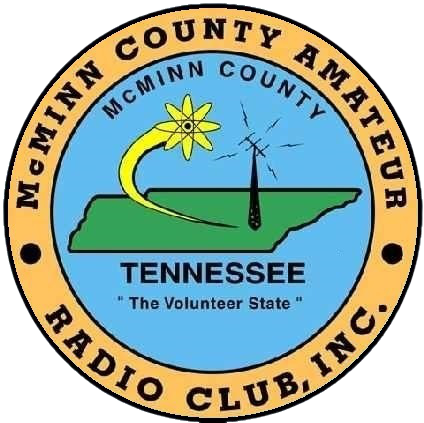 |
 |
 |
~Scanners~
Help for Scanner Listeners
For our scanner listeners,
this page has some tips to help you get more enjoyment out of your
scanner.
For our local ham radio repeater frequencies, they are as follows:
145.150 MHz
146.820 MHz (Main repeater we use and also used for Skywarn/Weather Net)
147.060 MHz
442.275 MHz
443.275 MHz
441.800 MHz
Simplex frequencies that are sometimes used are:
146.490 MHz
146.520 MHz
146.550 MHz
146.580 MHz
147.510 MHz
You can find other frequencies at http://www.radioreference.com/.
If you have an older scanner that is not programable, but uses crystals, do a Google search for "scanner crystals" to find a supplier.
They are still available for usually less than $10 each.
While most scanners are sensitive enough to receive local public service frequencies, a decent outdoor antenna helps a lot.
Even for the hand held scanner, there are adapters that you can use to hook up an external antenna in place of the "rubber duckie" antenna.
A popular commercial scanner antenna is the "Discone Antenna".
This antenna mounts on a TV mast, is light weight, and multi-banded (VHF-Lo, VHF-Hi, UHF, 800 MHz).
These can be found by doing a Google search for "Discone Antenna", and can be bought for less than $100.
You will also need a length of RG-58 coax with connectors to use to connect your antenna. Both ends of the cable need PL-259 connectors.
If you have a hand held scanner, you will need a "SO-239 to BNC" adapter.
Simply remove your hand held scanner;s antenna, put the adapter on, and screw on the coax fitting.
BE CAREFUL with this setup, so that you don't break the antenna connection inside the scanner.
If you listen mostly to VHF-Hi band frequencies (135 - 175 MHz), you can build a small ground plane antenna from a SO-239 jack and some wire.
Use the "2 Meter Dimensions" in the drawing below:

It will not take a lot of height to receive a lot more signals than you did with your indoor antenna. Just above the peak of your roof works fine.
ALWAYS BE CAREFUL WHEN INSTALLING ANY OUTDOOR ANTENNA! WATCH FOR POWER LINES, AND BE SAFE ON LADDERS!
And, last but not least, it may be that you have listened long enough, and now you want to talk. Consider getting your Amateur Radio Technician License.
You will be able to talk to the very same hams you hear on your scanner when you are tuned into the ham frequecies!
If you want to find out who that ham is you are hearing, copy down their call sign, and go to http://www.qrz.com and enter the call sign in their search box!
You can contact the McMinn County Amateur Radio Club, Inc. for additional info! Just click kg4fzr@yahoo.com .
For our local ham radio repeater frequencies, they are as follows:
145.150 MHz
146.820 MHz (Main repeater we use and also used for Skywarn/Weather Net)
147.060 MHz
442.275 MHz
443.275 MHz
441.800 MHz
Simplex frequencies that are sometimes used are:
146.490 MHz
146.520 MHz
146.550 MHz
146.580 MHz
147.510 MHz
You can find other frequencies at http://www.radioreference.com/.
If you have an older scanner that is not programable, but uses crystals, do a Google search for "scanner crystals" to find a supplier.
They are still available for usually less than $10 each.
While most scanners are sensitive enough to receive local public service frequencies, a decent outdoor antenna helps a lot.
Even for the hand held scanner, there are adapters that you can use to hook up an external antenna in place of the "rubber duckie" antenna.
A popular commercial scanner antenna is the "Discone Antenna".
This antenna mounts on a TV mast, is light weight, and multi-banded (VHF-Lo, VHF-Hi, UHF, 800 MHz).
These can be found by doing a Google search for "Discone Antenna", and can be bought for less than $100.
You will also need a length of RG-58 coax with connectors to use to connect your antenna. Both ends of the cable need PL-259 connectors.
If you have a hand held scanner, you will need a "SO-239 to BNC" adapter.
Simply remove your hand held scanner;s antenna, put the adapter on, and screw on the coax fitting.
BE CAREFUL with this setup, so that you don't break the antenna connection inside the scanner.
If you listen mostly to VHF-Hi band frequencies (135 - 175 MHz), you can build a small ground plane antenna from a SO-239 jack and some wire.
Use the "2 Meter Dimensions" in the drawing below:

It will not take a lot of height to receive a lot more signals than you did with your indoor antenna. Just above the peak of your roof works fine.
ALWAYS BE CAREFUL WHEN INSTALLING ANY OUTDOOR ANTENNA! WATCH FOR POWER LINES, AND BE SAFE ON LADDERS!
And, last but not least, it may be that you have listened long enough, and now you want to talk. Consider getting your Amateur Radio Technician License.
You will be able to talk to the very same hams you hear on your scanner when you are tuned into the ham frequecies!
If you want to find out who that ham is you are hearing, copy down their call sign, and go to http://www.qrz.com and enter the call sign in their search box!
You can contact the McMinn County Amateur Radio Club, Inc. for additional info! Just click kg4fzr@yahoo.com .